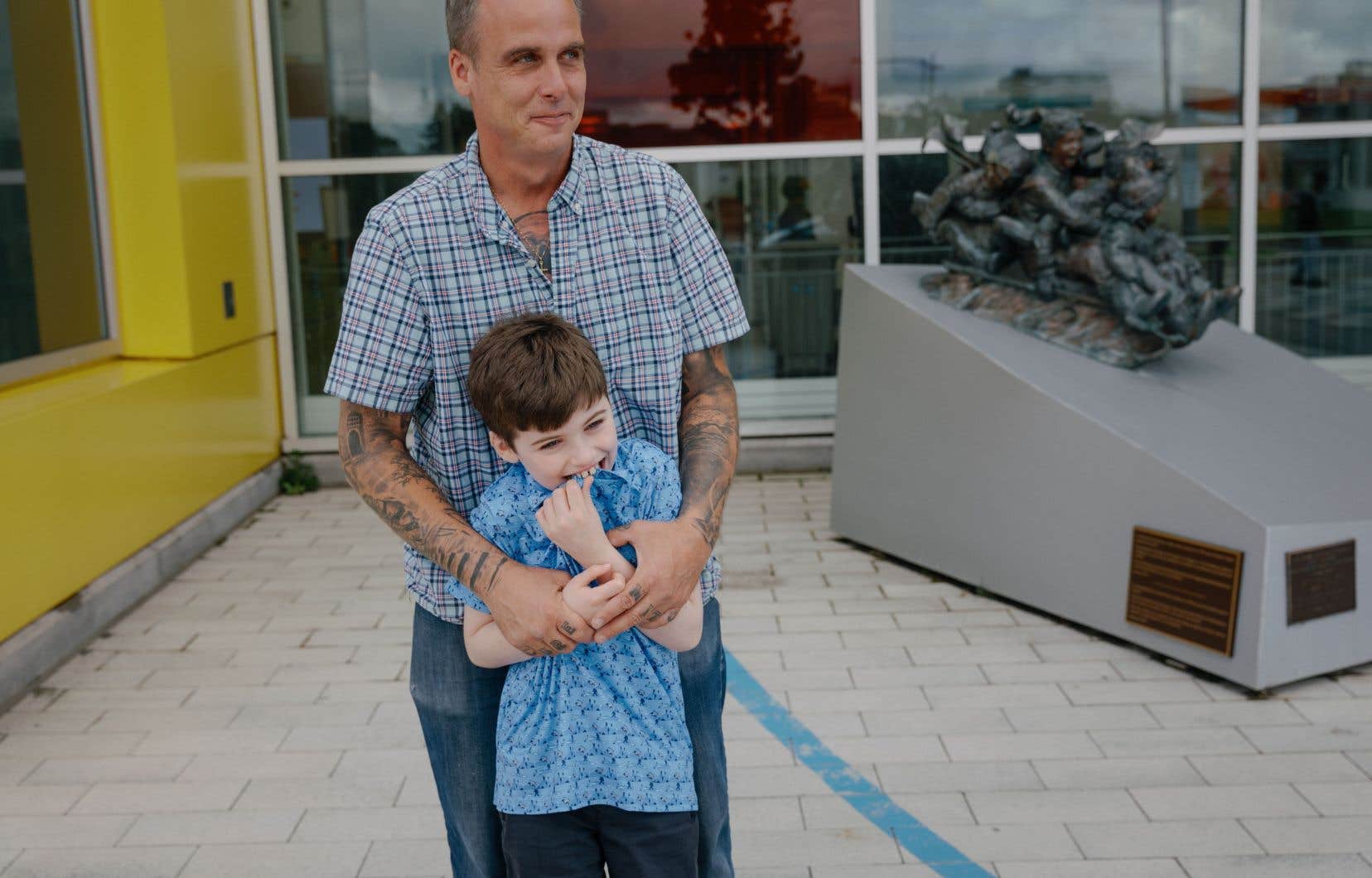Suffering from a rare and devastating neurodegenerative disease, 10-year-old Liam was the first patient in North America with this condition to test a new treatment, in a clinical trial. The results exceeded all expectations, to the point that the boy, whose condition had deteriorated significantly, began to walk again.
Met at the Montreal Children’s Hospital, where he is being monitored, Liam watches an episode of the American series with a smile Sesame Street. The little boy’s light blue eyes light up under the tender gaze of his father, Kevin James Reason. In 2019, the life of this family from Rosemère, in the Laurentians, was completely changed.
In the spring of 2019, Liam was admitted to the Montreal Children’s Hospital because he began having seizures almost continuously, Reason says. With medication, the seizures were eventually brought under control. But in June of that year, they started coming back with a vengeance.
After many tests to find the cause, the diagnosis was made: Liam suffers from a mitochondrial disease caused by mutations in the POLG gene. These lead to a reduction in the amount of mitochondrial DNA found in the mitochondria, these small power plants that make up most of our cells. This therefore prevents the mitochondria from functioning properly.
This results in various symptoms in patients that can include seizures, vision loss, muscle dysfunction, nerve damage, developmental disorders or regression. Very rare, POLG-related diseases are estimated to affect one in 300,000 people worldwide.
By the spring of 2019, the boy’s condition had deteriorated dramatically, Kevin James Reason says. “He couldn’t walk or talk.” “Doctors at the hospital told us to enjoy the time we had left with our son,” the 48-year-old recalls, his voice shaking. According to a study conducted in Norway and published in 2024 in the journal Annals of Clinical and Translational Neurologyonly 50% of patients with these diseases are still alive three years after the onset of symptoms.
Devastated, this father of four quickly pulled himself together. “I said to myself: ‘We have to fight, we have to do something.'” On his knuckles, he had the words “Cure Mito (Curing mitochondrial diseases) ». “All my tattoos done since 2020 tell Liam’s story,” he explains.
A new treatment
In hopes of finding a cure, Mr. Reason set up a foundation named after his son. “We also wanted to raise awareness about this disease,” he says.
At the Montreal Children’s Hospital, he heard about a new treatment that could help his son, through Dr.r Kenneth Myers, a pediatric neurologist and researcher in the Child Health and Human Development Program at the Research Institute of the McGill University Health Centre. “We thought this drug would increase the amount of mitochondrial DNA in patients and thus allow the mitochondria to function better,” says Dr.r Myers.
Together, Kevin James Reason and the Dr Kenneth Myers decided to launch a clinical trial, which would also include other patients. “We have to give them hope,” Liam’s father says, pressing his hand to his chest.
The Liam Foundation provided almost complete funding for the clinical trial. “Without the Foundation, this trial would not have been possible,” says Dr.r Myers.
Giant steps
In the fall of 2021, Liam was able to begin the clinical trial, becoming the first patient with a disease linked to the POLG gene to test this new treatment in North America. It involves swallowing a medication three times a day. In total, 28 people from different countries such as India and Brazil have participated in this trial to date, the majority of whom are children.
Preliminary results from the clinical trial of the first ten patients suffering from diseases linked to the POLG gene have been published in the journal eClinicalMedicine. They exceed all expectations, says D.r Myers. “I’m always optimistic, but I honestly thought that, in the best case scenario, we would only be able to stabilize the disease and maybe reduce its progression. So I was a little surprised, but really pleased, when we saw improvements in the clinical status of several of our patients.”
In Liam’s case, the boy has started walking again and is much more receptive to the world around him, says Kevin James Reason. “He’s becoming more comfortable and, even though he doesn’t talk much, his ability to communicate is improving,” he says, stroking his son’s cheek.
“I said to myself: ‘If he can fight like that, I’m going to fight for his life.’ We have a lot to learn from him,” he adds.
To this day, Liam is continuing the new treatment. “We know it’s not a cure, but it’s buying us the precious time we need to find a cure,” Reason says.
For the Dr Myers said the clinical trial changed the way he approached POLG-related diseases. “It’s now reasonable for those who suffer from it to have hope for a more normal and longer life,” he said.
